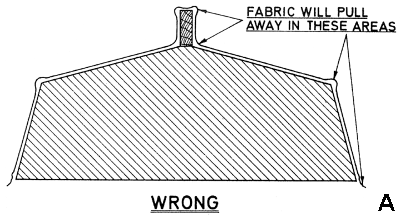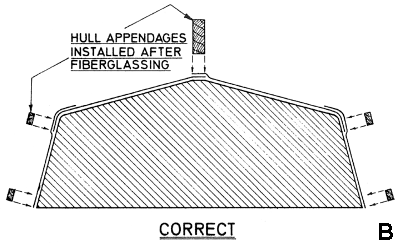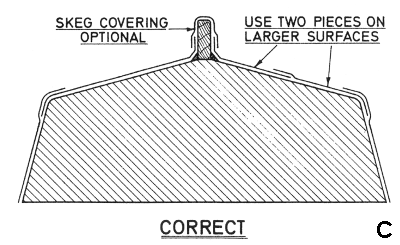Shop Talk: How to utilize sheathing fabrics
Continued

For example, in the illustrations, the hull section "A" above has been covered from sheer to sheer in one piece of cloth, even over the protruding skeg. Several things are wrong with such a practice. In the example, no corners have been radiused which means that the cloth will pull away from these areas. Even if the corners were radiused, there would be a problem keeping the cloth in position in one area while another area was being worked. Even on a small boat, it would be very difficult to work an area with this many surface direction changes before the resin set up. In short, the job would probably turn out a mess.

The other examples ("B" and "C") show the correct manner in utilizing the cloth. Whenever possible, all hull appendages should be removed and the cloth then applied after proper surface preparation. If an appendage (such as the skeg in the "C" example) cannot be removed, then at least the inside corners should be filleted or fitted with cant strips. In this case, the bottom panels lap only partially onto the skeg each side, and a small piece of cloth is used to cap the skeg.

Where the boat is fairly large, it is often better to do the bottom in two panels per side. The reason is much the same as in the first example. There will be a tendency for the material to pull away from the skeg as the material is worked closer to the chine edge. It can also be difficult to work such a large area fast enough.
The example "B" will prove the easiest to apply because the appendages have been removed thereby reducing the number of surfaces to be covered at one time. After the application, the appendages are reinstalled. These can be bedded in resin saturated scraps of cloth or mat for bonding in place. Or if they are to be removable in the future, they are best bedded in a non-hardening marine-type mastic.